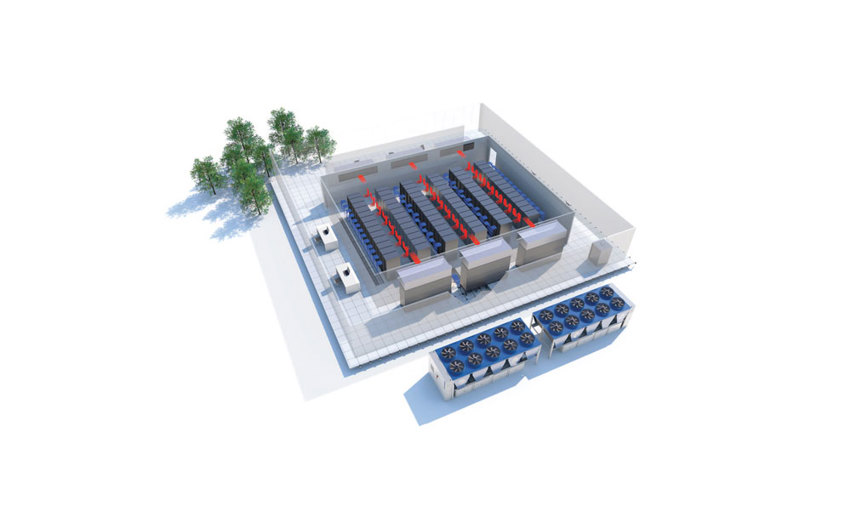High-efficiency solutions for data centres
Data centres’ share of global IT energy is substantial and, their energy demands are set to increase. The energy required for cloud computing globally has now exceeded India’s national energy consumption for example. Given that IT energy performance is a priority area, equipment geared to low-energy applications is helping to break the rising curve in data centres worldwide.
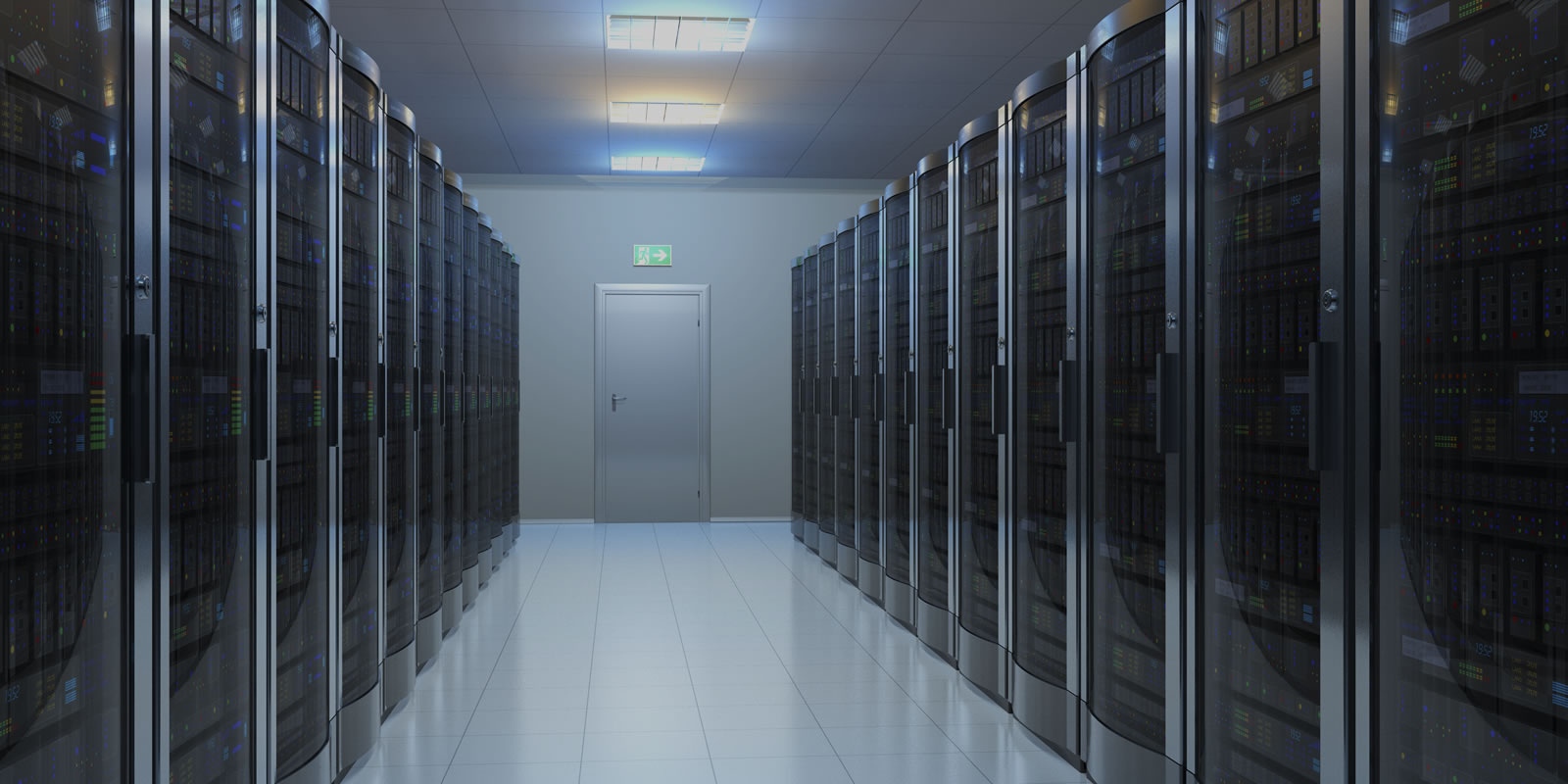
Opt for high precision cooling
It is important to realise that only 30% of energy used in a data centre is expended on the actual IT equipment and storage units. The rest of the energy is required to power an array of other devices such as UPS systems, lighting, humidifiers/dehumidifiers, computer room air conditioning (CRAC) units, units for electricity distribution, and, not least, cooling. Once the energy required just to cool the data centre reaches 33% of the total energy bill, you’ll realise that cooling has to be efficient and a high-precision system.
Harness the energy benefits of free cooling!
Across much of Europe, free cooling, i.e. cold outdoor air used for cooling, makes a substantial contribution to the cooling efficiency of data centres. A distinction is made between direct and indirect free cooling. With direct free cooling, outdoor air is essentially blown in to eliminate heat generated by the computer equipment. This is ideal for centres with high air turnover. The advantage of this is its efficiency; the drawback being that you end up with less control over air quality and humidity. With indirect free cooling, the outdoor air cools a heat transfer medium, which then in turn cools the computer equipment. This provides far better control of air quality and humidity, and greater stability too. The drawback is that indirect free cooling is less efficient, as the disparity between the two temperatures in the transfer medium results in energy loss.
Data centre energy consumption can be reduced by up to 40%
The indirect free cooling can be utilised by means of two different technical solutions. For large data centres, the best option is external cooling with free cooling for the cooling water, which is a versatile and highly efficient solution for achieving a 30-40% reduction in annual energy consumption. By using electronically commutated (EC) fan motors, maximisation of energy performance is achievable even for partial loads.
For smaller-scale data centres and other premises that lack the space for large external coolers, the alternative is a system with direct expansion of the cooling water. This minimises compressor operation, reducing operating costs.
Improved fan control for energy-efficiency improvements
EC fans are the state-of-the-art option for data centre ventilation. These brush-free fans are electronically commutated and feature 3-D fan blades made of composite material. This means reduced noise and energy consumption, but also auto-adaptation in response to altered thermal loads, air volumes and static pressure.
With automatic fan optimisation, only the air volume required by the IT equipment is distributed. If the data centre is only partially filled with IT equipment, this can be compensated for with perforated flooring to enable the air volume to be down-adjusted and air flow rate to be reduced.
Partial loads call for smart compressor solutions!
The use of variable speed compressors boosts efficiency in handling partial loads. This allows temperature and humidity to be adjusted more precisely. There is also the option of using reserve compressors (kept on standby) to supplement the main compressor in order to reduce total energy consumption.
The chillers have also been developed and efficiency-enhanced for coping with partial loads. Inverter technology for compressors has helped to make this possible. For apartment buildings and less complex commercial applications, scrolling or rotating compressors powered by a CD inverter are used. For more energy-intensive systems, rotary twin screw compressors with integrated AC inverters are used.
Hybrids for added options
With multicompressor units, the choice is between hybrids in which conventional compressors are used concurrently with inverter-powered compressors versus solely inverter-powered compressors. This allows customers to always strike the right balance between energy efficiency and cost, depending on the application. The combination of an inverter and screw or scroll compressors offers the highest efficiency, while the operational limits are equivalent to those for conventional units.
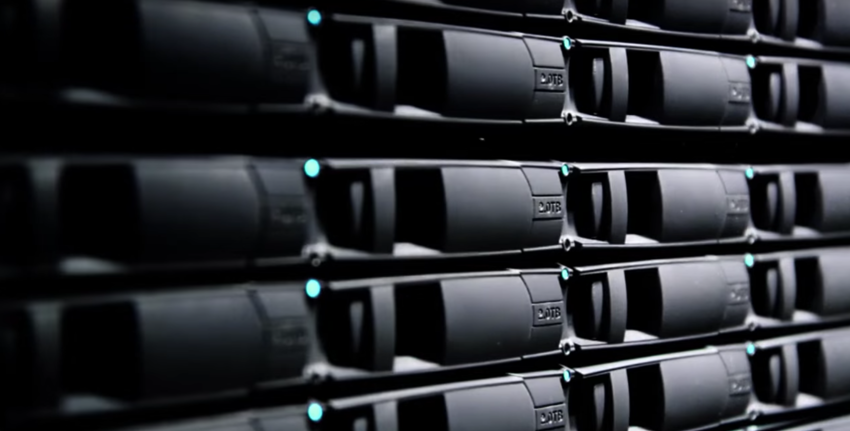
Reliability in data centres is imperative
The aim for a data centre is continuous, flawless operation 24/7. This places stringent demands for reliability and component quality, but also for redundancy in the system: if any component does fail, it must not disrupt operations overall. The larger the data centre, the more stringent the requirements: fault tolerance, ability to sustain power outage, two utility paths, and two independent circuits are examples of critical parameters. The aim is to radically reduce the centre’s downtime. Any power outage must only be of short duration, regardless of whether the failure is due to an accident or human factor.
Advanced control features provide high-level redundancy, optimised thermal load and facilitate free cooling management
In order to achieve the requisite control, key system components must be able to communicate and interact. One effective solution is to control the local network via an integrated website, which facilitates performance monitoring for the data centre’s systems manager. Systems status must also be easy to monitor, e.g. via an ordinary tablet computer.
Maximised control of cooling water!
Control and monitoring are key as regards the flow and temperature of cooling water. By permitting higher temperatures in the cooling water when load values are low, efficiency is boosted, and with increased use of free cooling, compressor run-time is reduced. Conversely, if humidity requirements can be eased, the cooling water temperature can then by way of compensation be kept lower, since dehumidification will be more rapid and effective.
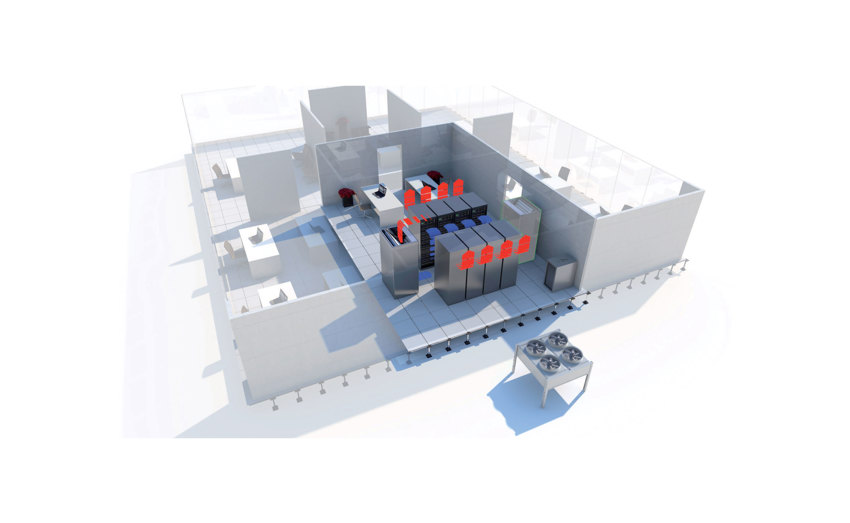
Server rooms require powerful but compact cooling systems
The ideal server room solution is a unit with a direct expansion, distanced condenser with vertical flow and air distribution directly into the server room. This allows various installation requirements to be met in one, and the installation will be dependable and efficient, and customisable by the customer.
Integrated solutions for small-scale data centres provide a high kW/m2 quotient on minimal floor space
In spite of the name, small data centres often spell high energy density if they run blade servers. This is best catered for with blade chillers, which efficiently eliminate high volumes of hot air. This solution eliminates the need for raised flooring for air distribution, which reduces upfront installation costs.
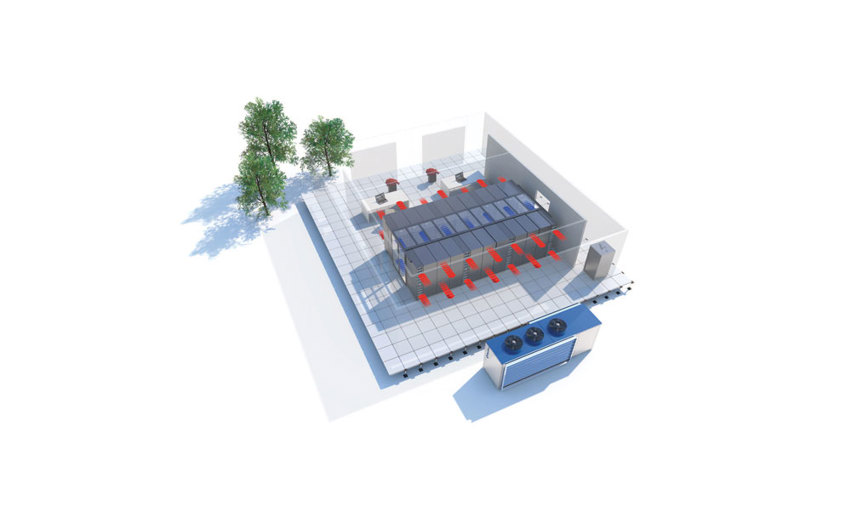
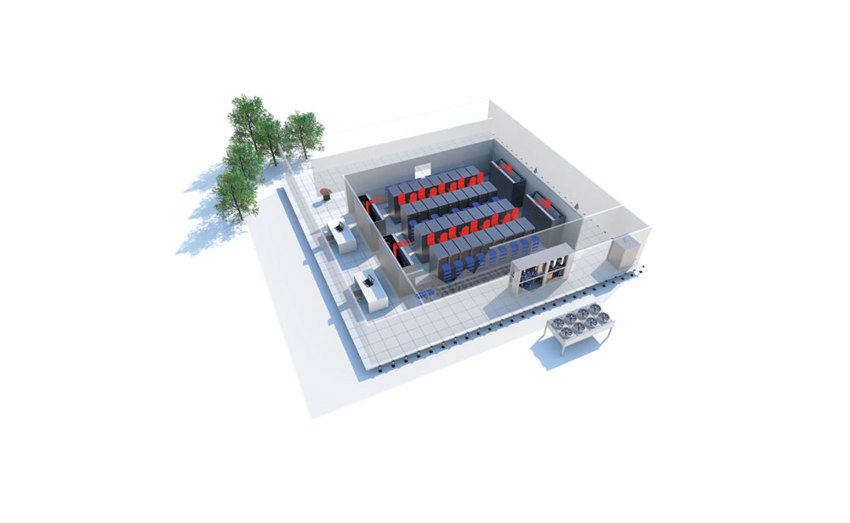
For medium-sized data centres, we offer proprietary and energy-efficient solutions
Where the centre will be operating 24/7/365, the combination of indoor-installed, water-chilled units for air conditioning plus chillers for free cooling provides the most energy-efficient solution on the market. One typical configuration uses the air flow under raised flooring with racked solutions in warm versus cold corridors, which maximises energy handling capability, operations and a high kW/m2 quotient.
For centres dealing with very high heat generation, the best choice will usually be large air chilled and inverter-driven chillers.
Large data centres generate immense heat, which entails installation under raised flooring
Large, state-of-the art data centres require advanced cooling with high efficiency and capacity, including units for air conditioning with plenum fans. The units should have separate fan sections and be optimised for installation under raised flooring, with strict control of the under-floor pressure.
Modular construction and the use of free cooling are decisive for reliable operation and cost-efficiency. The many installations of very large data centres in Northern Europe have been realised precisely due to the reliable access to free cooling for most of the year as well as secure power supply at competitive prices. In a number of cases, power can be supplied from two or more independent hydropower plants in the region for unbeatable reliability of supply.
